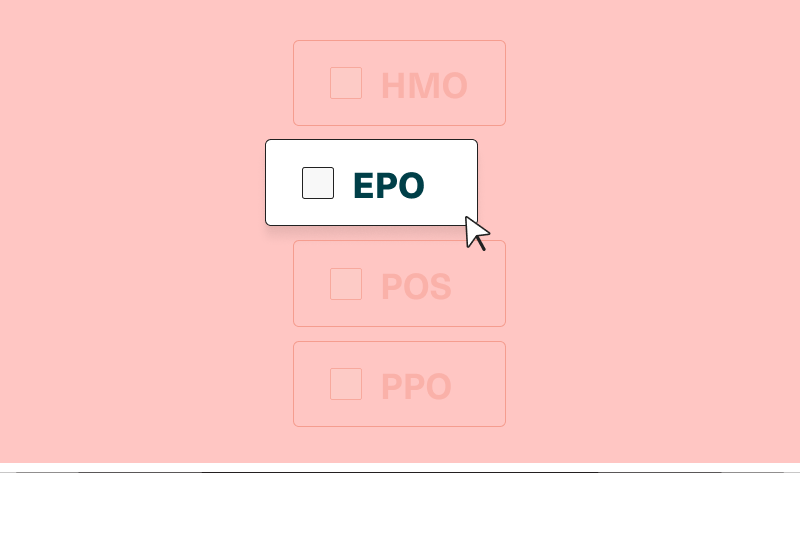How to offer health insurance to your employees

Offering health insurance to your employees is a great investment
Are you a small business wanting to offer health insurance to your employees but aren’t sure where to start? You aren’t alone. Health insurance is complicated and a significant investment. Some reports say the average cost of employee health care makes up approximately 8% of a company’s annual operating budget, even more for small businesses that insurers typically charge a higher premium.
What can you expect? It depends on the plan and the size of your company. A 2020 Kaiser Family Foundation Employer Health Benefits Survey found that annual employer-sponsored health care premiums cost an average of $21,342 for families, with employers paying an average of 70 percent of those premiums. Those premiums are up 4% over 2019 and 9% over 2018.
No doubt about it, health care plans are an investment. But they have a good rate of return. More than half of small businesses offer healthcare benefits to their employees, and employees say they value those benefits enough to decline an offer or leave their employer for another that provides a health plan. Your decision to offer healthcare benefits to your employees tells them that you care about their health and wellbeing and are willing to put your money where your mouth is.
How to offer health insurance to your employees
You don’t have to be a startup to introduce health benefits to your employees. Established companies can decide to invest in a plan at any time. Either way, you can follow the steps below to begin offering health insurance to your employees in no time.
Related: When should my startup begin offering health insurance?
Figure out a budget
What can you afford to have your company cover for employee benefits? Your plan cost may or may not be in the same ballpark as the numbers found in the Kaiser survey, as those were averages, and every plan is different. Several variables will influence your cost.
When budgeting, it’s important to understand that your cost will be dependent upon what percentage of employee premiums you are willing to pay, how many employees choose to participate, and if you will pay for employees only or employees plus their families. The type of plan you provide will also influence your cost (and your employees’ costs).
Some good news? As a small business, you can deduct the cost of employee premiums from your federal taxes. You may also qualify for a tax credit. You can check out the IRS website to see if you are eligible and how much you may receive.
Determine what your employees value
Each of your employees has their own health care needs and budget. Before you commit to any plan, survey your employees to find out what matters most to them, both for the cost of their portion of the plan and the type of coverage they want. How many of them think they would participate?
You will undoubtedly have employees who prefer a lower upfront cost with higher deductible plans, while others opt for a higher upfront cost with lower deductibles. You don’t have to choose one or the other when you select a plan. Most health insurance plans will give you a range of options you can offer your employees, giving them the ability to pick what works best for them.
Beyond cost, there are other differentiators among health insurance plans. For instance, do your employees want the freedom to use providers of their choice? While this flexibility can come at a higher cost, many are willing to pay extra to avoid the hassle of getting referrals and staying “in-network” every time they see a doctor or visit a healthcare facility.
What about flexible care options, like telehealth and in-home urgent care? Not all plans provide coverage for these options, but it is worth looking into before choosing a plan if they are valuable to your employees. Telehealth visits have skyrocketed due to COVID-19, and the trend doesn’t seem to be shifting anytime soon.
The CDC found that 69% of patients who had a telehealth encounter during the early pandemic period in 2020 were managed at home. Only 1.5% were advised to seek care in an emergency department, and 3% were referred to an urgent care facility, both of which are much more expensive options.
Choose how you want to buy
Once you have a good understanding of what your employees value, it’s time to get to work on researching plans. Do you want to use a health insurance broker or employee benefits advisor or go direct to the insurance companies?
You can save time by working with a broker or advisor who can narrow your search for you based on your needs. Because the insurance world is complicated, these professionals can guide you through the intricacies and help you make informed decisions. They can also help with administrative tasks so you can focus on other things, saving you both time and money. You don’t pay a broker for their help. The insurance company compensates them as part of the deal.
If you decide to work directly with the insurance company, be aware that many larger, traditional companies provide little human support. Much of their service is online through articles and how-to guides. Smaller insurance companies that are more customer-focused may offer a dedicated member advocate at no cost who will help you navigate your benefits. They may also provide online tools you can use to manage your employee benefits more efficiently.
Determine the types of plans you’d like to offer
Once you select an insurance company, you will need to determine which types of network types you want to offer your employees. There are HMOs, PPOs, POSs, or Open Access plan types.
HMO
An HMO is typically the least expensive type, but it limits members to only “in-network” providers the carrier has pre-negotiated prices with, and members often must obtain a referral to see in-network specialists. Members can still use out-of-network providers, but they will have to pay out-of-pocket for everything other than emergency care.
PPO
PPOs are more flexible, enabling members to choose providers without a referral, but often at a higher cost than choosing in-network providers. PPOs are typically more expensive than HMOs.
POS
A POS plan stands for “Point-of-Service,” and it is a combination of an HMO and PPO. It requires referrals from a primary care physician to see a specialist, and it allows for out-of-network care at a higher cost.
All-Access
An All-Access plan is new to the game, pioneered by Sana. With an All-Access plan, members can see any provider they want, even specialists, without a referral or higher premiums or deductibles. Sana negotiates pricing with providers based on Medicare’s schedule of prices, plus an additional set premium. Shrinking provider markups reduces the cost of care, which can then make premiums more manageable.
Related: What is an Open Access Network in health insurance?
Get quotes
Now, it’s time to compare quotes from various insurance companies to see how each offering stacks up. Remember, pricing isn’t everything. You want to be sure your plan meets the needs of your employees, too.
Compare each plan based on deductibles, co-insurance, out-of-pocket max, and other features, such as telehealth, mental health, maternity care, ease of use, and customer support.
Plan your onboarding strategy
Finally, it’s time to plan how to get your employees signed up through Open Enrollment. Your carrier will determine when your Open Enrollment period will be, typically a week or two before the plan takes effect. New hires will be able to enroll when they accept their job offer.
During the weeks and days before Open Enrollment, advertise the plan across multiple channels so your employees know what it is, why it matters, what they’ll get, and when and how they can sign up. Provide as much detail as possible, and be sure there is at least one contact person available to answer any questions and guide employees through the process if necessary.
Remember, enrollment is strictly voluntary. Some of your employees may already be covered under a parent’s or spouse’s plan, and others may choose to find their own insurance.
The key is to promote health insurance benefits to your employees as an investment in their health and well-being. You are paying for the coverage, and it is essential your employees view this as another perk to working at your company.







